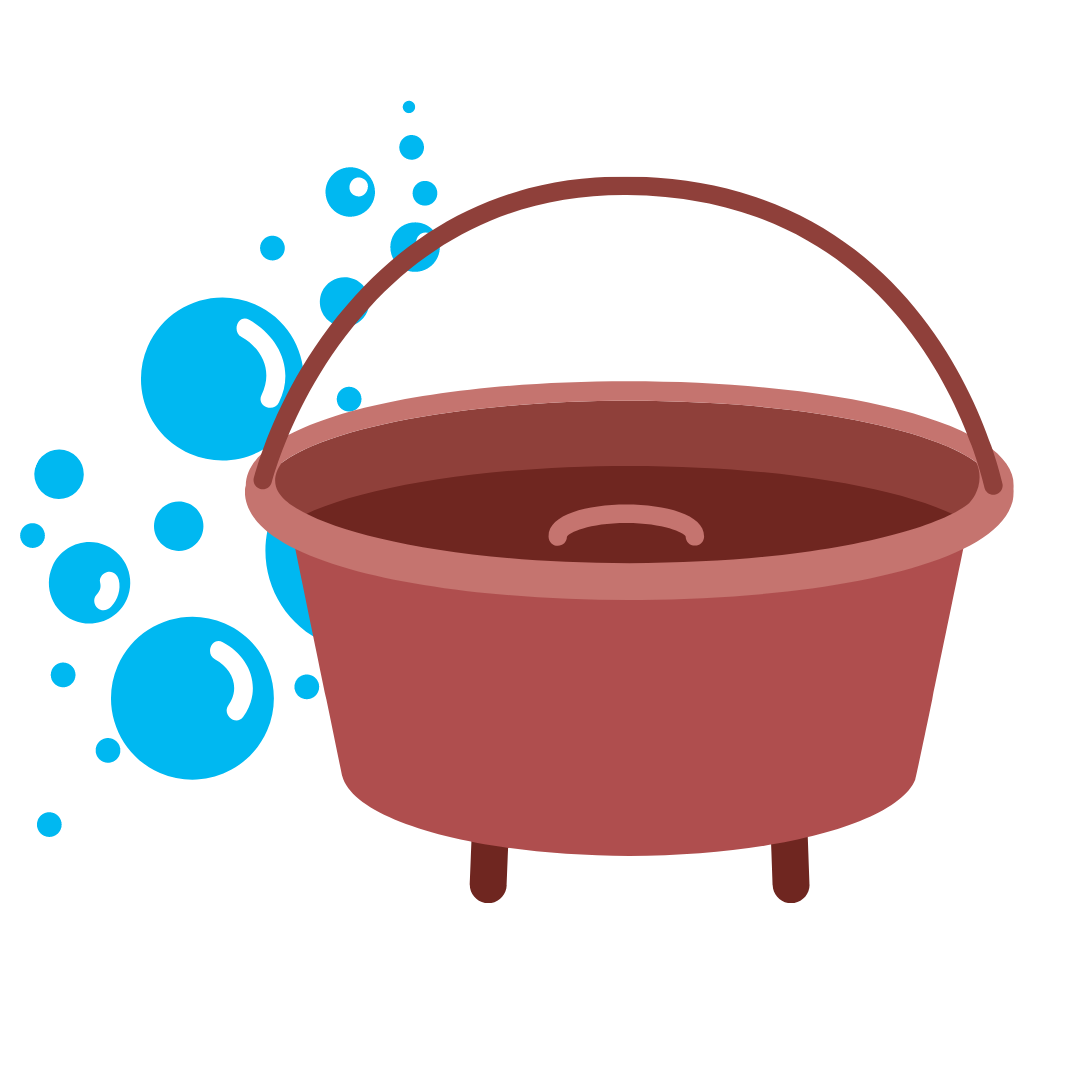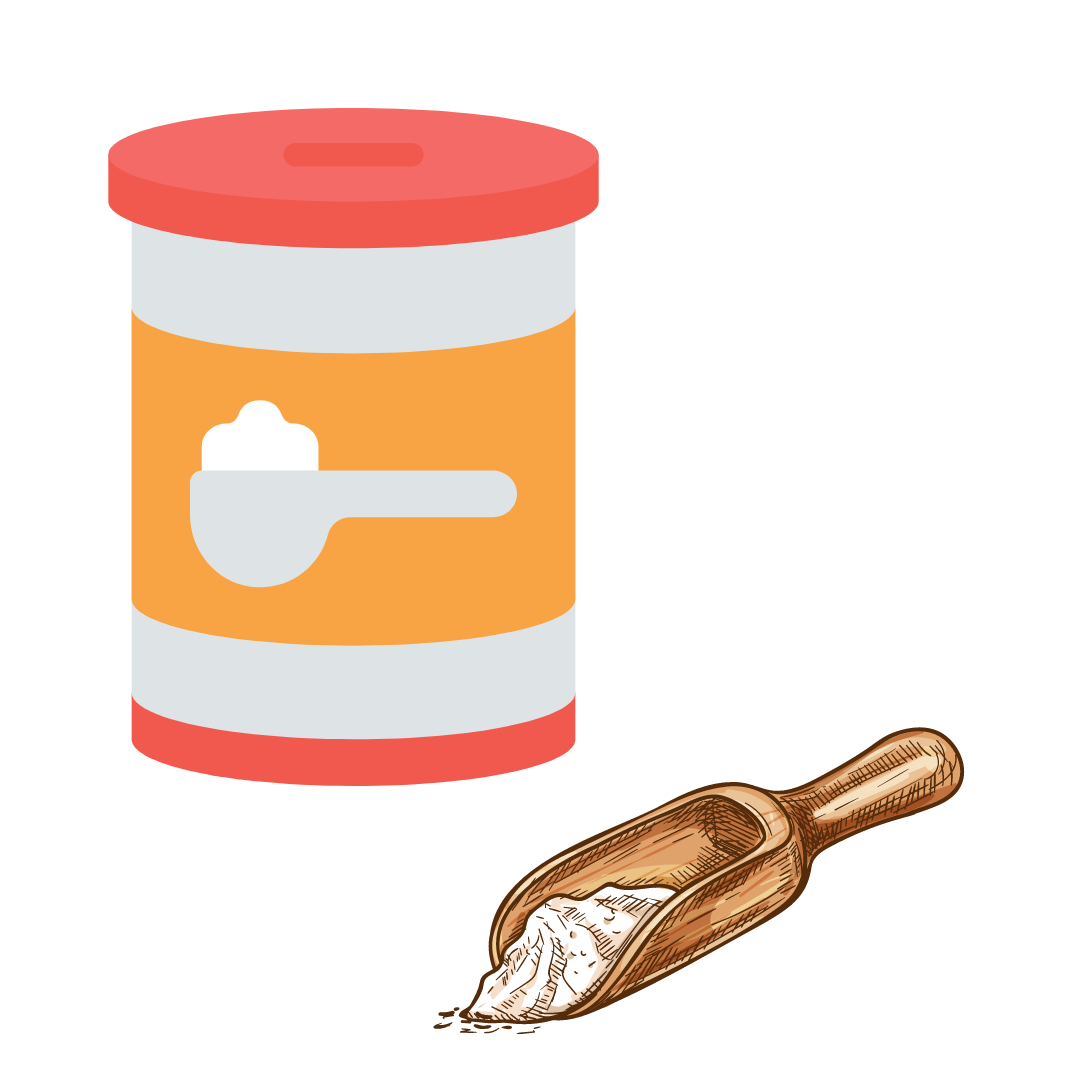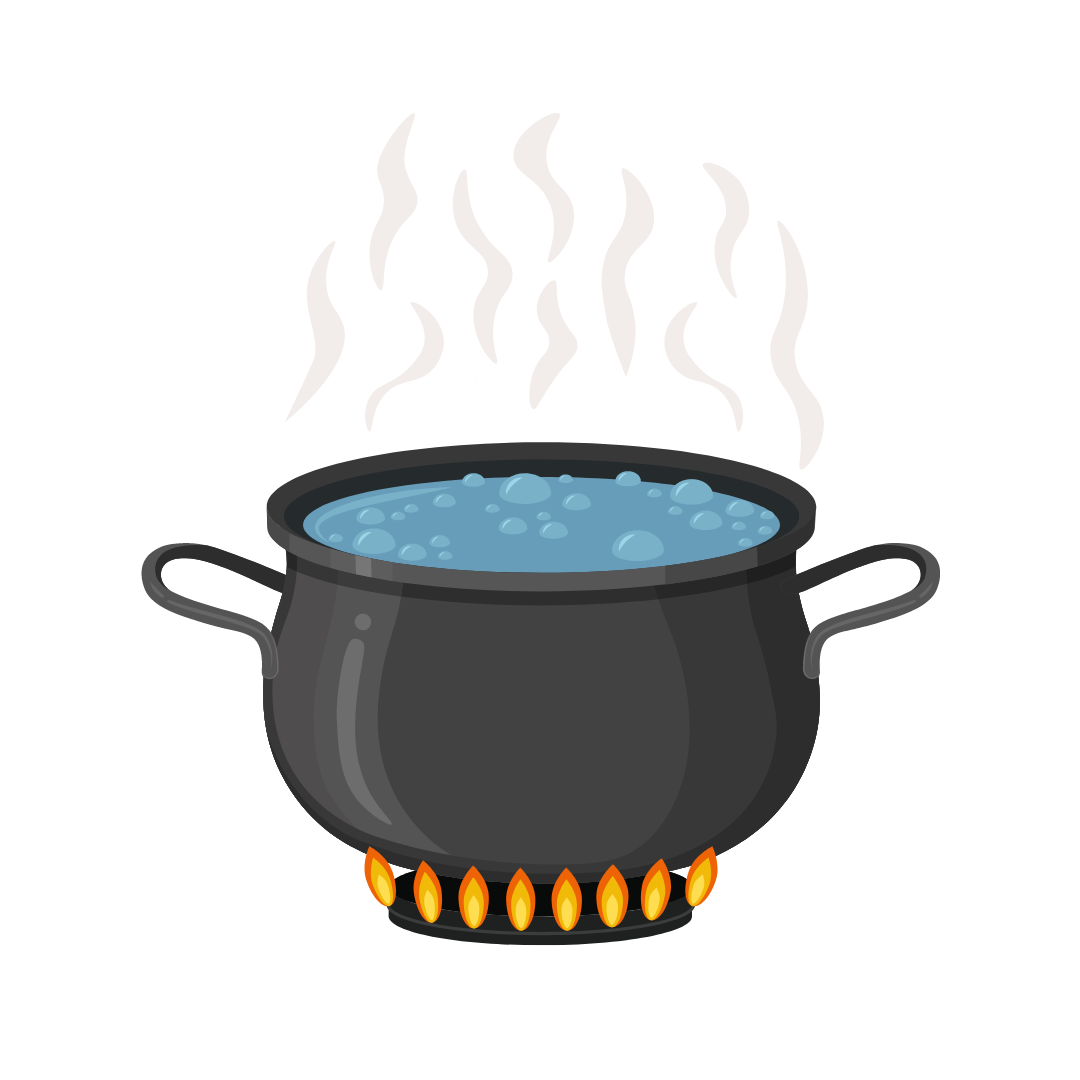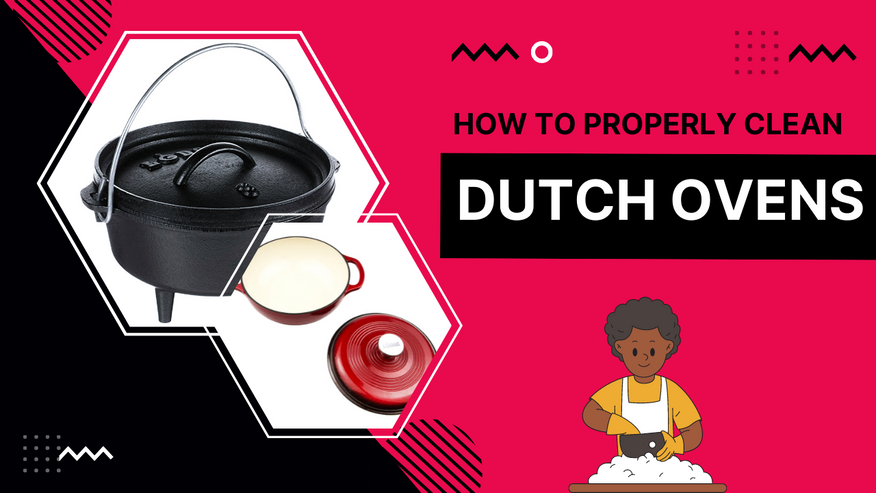Jul 8th 2022 - Monica Cunanan
How to Properly Clean Dutch Oven
 Dutch ovens are great for braising meats for hours, stewing vegetables, and turning bits of food from the fridge into cozy soups that can last a whole week. They can be a little pricey (they can cost up to a few hundred dollars) but they're a great investment. If you treat them with a level of care, they’ll be around for decades and can even be one of those kitchen heirlooms.
Dutch ovens are great for braising meats for hours, stewing vegetables, and turning bits of food from the fridge into cozy soups that can last a whole week. They can be a little pricey (they can cost up to a few hundred dollars) but they're a great investment. If you treat them with a level of care, they’ll be around for decades and can even be one of those kitchen heirlooms.
Here’s what you need to know about dutch oven cleaning methods:
How to Clean a Dutch Oven (General Steps):
- Step 1: Clean the exterior first. Remove pesky spills and grime by wiping them down with a dedicated cloth. You can also make a paste from baking soda and water, and scrub it onto the pot with a damp sponge. Remember to not use any abrasive ones such as steel wool.
- Step 2: Clean the inside of the oven thoroughly. For cast-iron dutch ovens, you need to use boiling water and avoid soapy water. As for the enamel cast iron, you may need to soak it if it gets too stubborn.
- Step 3: Beware of chipping. Cracks in cast iron or chips in enamel should be fixed. If you ignore those, it can seriously interfere with your cooking. Check for any damage before using it.
- Step 4: Dry and Apply new seasoning. Dry thoroughly and apply new seasoning if applicable. Dutch Ovens with Enamel finishing don't require this but it is needed for cast iron ones.
It's super important to clean your Dutch oven properly because you don't want to scratch that precious enamel that evenly sears your meats, and perfectly caramelizes your onions. You also don't want to ruin your seasoned cast iron pots. I'm sure you don't want leftover bits of yesterday's dinner getting mixed into this evening's caramel sauce. However, there may come a time when cleaning your Dutch becomes necessary, like for example, at the beginning of a new year.
Want to learn more about how to use different types of dutch ovens? Check out this article!
Cleaning: Cast Iron vs. Enameled Cast Iron

Cast iron and enamel cast iron are the most common types of Dutch ovens. They're both great with exceptional heat distribution. Both are made of cast iron, but an enamel-coated cast-iron Dutch oven is coated in an even hard, non-stick enamel coating. Dutch ovens with enameled coating are easier for cleaning, don't need to be seasoned, and come in more colors and designs than cast iron.
However, cast iron dutch ovens are usually more durable and cheaper than non-cast iron dutch ovens. It depends on personal preference which one you prefer. Always remember that if you will be using a brand new cast iron Dutch oven, you must season it.
How to Properly Clean an Enameled Cast Iron Dutch Oven:
You don't need to season an enamel coated cast iron Dutch oven, but you do have to be aware of the risks of damaging the enamel when you clean it. Some enameled Dutch ovens are even suitable for the dishwasher. However, we'd recommend hand washing these pots to prolong their lifespan.
Step 1: Soak
The enamel coating shouldn't stick to anything, but sometimes it is unavoidable to get bits of grime. If this happens, try these steps:
- Just leave it soaking 30-60 minutes with inch of water and drops of dish soap. It should come off easily with just a sponge.
- As an extra step, you can also try a baking soda bath. You do this by boiling water in the pot with a paste consisting of three parts baking soda and one part water and then letting it soak.
If you have burnt-on grime that just don’t seem to budge—mix it with a tiny bit of water, and scrub away. Remember to avoid using steel or abrasive cleaners.
Step 2: Scrape and scrub

Since most foods don't stick to enameled surfaces, the inside should be easy to clean using just some dishwashing liquid and hot water. If there is stuck-on food, use a nonmetal scrub brush to loosen the stuck food or fill the it to soak for several hours with hot water and a drop of dish washing liquid. Do not use any citrus-based cleaners since it can dull the exterior glossy finish. Make sure to also be aware of enamel chipping before cleaning.
Step 3: Try Baking Soda For Stubborn Stains

Boiling Method:
- Add 4 cups of hot water to your pot and turn up the heat to medium.
- Boil the pot with water and add two tablespoons of baking soda and mix well.
- Let the mixture simmer for a few minutes before scraping stuck-on food off the bottom of the pan with a wooden spoon.
- Make sure to rinse with warm water after dumping the solution down the drain.
Soak Method:
- You can also make a paste of three parts baking soda and one part water.
- Put the lid on the Dutch oven and let it sit overnight.
- Scrub the stains with a dish sponge, bit of soap, and warm water.
Step 3: Dry and Store
Let it sit in the drying rack until all traces of water have evaporated. You can also just use a cloth towel.
How to Properly Clean a Cast Iron Dutch Oven
Step 1: Initial Wipe down
Regularly cleaning cast iron Dutch ovens requires some effort. After each use, clean it up with a dry paper towel or dedicated cast iron cloth and then store it in a cool, dark place. You can also use damp sponge or paper towels to clean off any sticky residue. Dry it well.
Step 2: Use Boiling Water

Put some water into the Dutch oven so that any burnt food residues are covered. Bring the water to the boil, then turn off the heat setting and let the water sit for a few minutes.
Step 3: Scrub the interior
 After the water has cooled, use an appropriate cleaning brush and scrub any remaining residue using a brush scrubber. You can also use a chainmail wrapped sponge to remove stubborn bits from your teeth.
After the water has cooled, use an appropriate cleaning brush and scrub any remaining residue using a brush scrubber. You can also use a chainmail wrapped sponge to remove stubborn bits from your teeth.
WARNING: Do not use mild soap on cast iron or soak it in any kind of liquid, because this will ruin its seasoning.
Step 4: Thoroughly Dry
Wipe down using dry paper towels or drying cloth. If you want to be extra sure that it's dry, you could heat the oven on the stove for 20 minutes.
Step 5: Seasoning by adding a new coat of oil
 Put a small amount of cooking oil into the pot. Rub the oil into both the interior and exterior surfaces with the paper towel. After wiping off the excess oil residue, put the Dutch oven away.
Put a small amount of cooking oil into the pot. Rub the oil into both the interior and exterior surfaces with the paper towel. After wiping off the excess oil residue, put the Dutch oven away.
Pro-Tip: You need to season new Dutch ovens before you can use them properly. To season a Dutch Oven, coat it in oil, place it in a 350 degrees Fahrenheit oven for 30 minutes, then remove from the oven and let cool. After applying the oil, heat it in a 200°F oven for an additional hour before using. Leave the Dutch oven in the oven overnight. Apply a final coat of oil before use.
Want to have the Best Dutch Ovens?
Here at Culinary Depot, we carry different types of dutch ovens for all your needs. Can't find the right kitchen tool? Contact us or visit our online store for more information.



